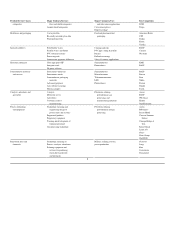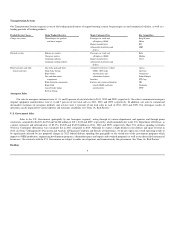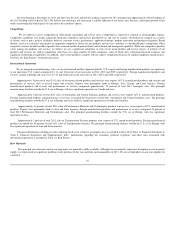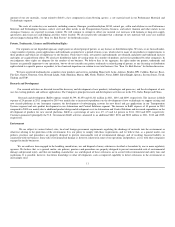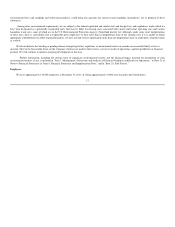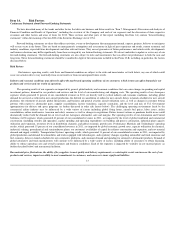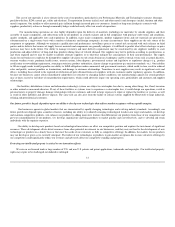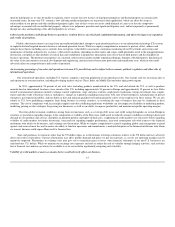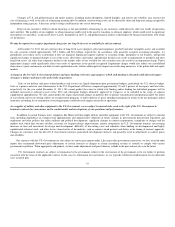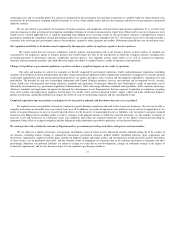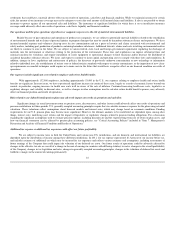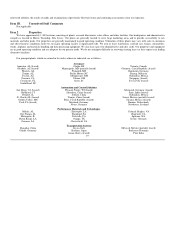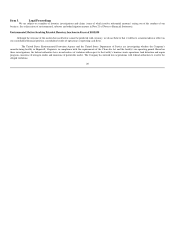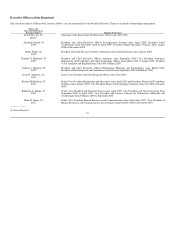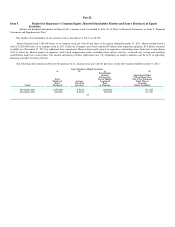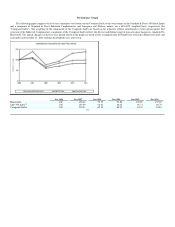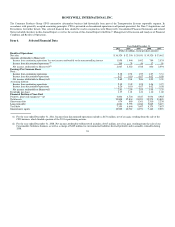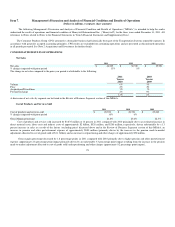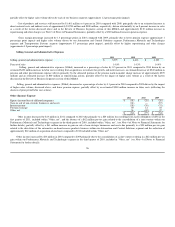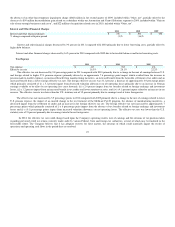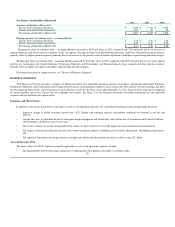Honeywell 2011 Annual Report Download - page 21
Download and view the complete annual report
Please find page 21 of the 2011 Honeywell annual report below. You can navigate through the pages in the report by either clicking on the pages listed below, or by using the keyword search tool below to find specific information within the annual report.
settlements that could have a material adverse effect on our results of operations, cash flows and financial condition. While we maintain insurance for certain
risks, the amount of our insurance coverage may not be adequate to cover the total amount of all insured claims and liabilities. It also is not possible to obtain
insurance to protect against all our operational risks and liabilities. The incurrence of significant liabilities for which there is no or insufficient insurance
coverage could adversely affect our results of operations, cash flows, liquidity and financial condition.
Our operations and the prior operations of predecessor companies expose us to the risk of material environmental liabilities.
Mainly because of past operations and operations of predecessor companies, we are subject to potentially material liabilities related to the remediation
of environmental hazards and to claims of personal injuries or property damages that may be caused by hazardous substance releases and exposures. We have
incurred remedial response and voluntary clean-up costs for site contamination and are a party to lawsuits and claims associated with environmental and
safety matters, including past production of products containing hazardous substances. Additional lawsuits, claims and costs involving environmental matters
are likely to continue to arise in the future. We are subject to various federal, state, local and foreign government requirements regulating the discharge of
materials into the environment or otherwise relating to the protection of the environment. These laws and regulations can impose substantial fines and
criminal sanctions for violations, and require installation of costly equipment or operational changes to limit emissions and/or decrease the likelihood of
accidental hazardous substance releases. We incur, and expect to continue to incur capital and operating costs to comply with these laws and regulations. In
addition, changes in laws, regulations and enforcement of policies, the discovery of previously unknown contamination or new technology or information
related to individual sites, the establishment of stricter state or federal toxicity standards with respect to certain contaminants, or the imposition of new clean-
up requirements or remedial techniques could require us to incur costs in the future that would have a negative effect on our financial condition or results of
operations.
Our expenses include significant costs related to employee and retiree health benefits.
With approximately 132,000 employees, including approximately 53,000 in the U.S., our expenses relating to employee health and retiree health
benefits are significant. In recent years, we have experienced significant increases in certain of these costs, largely as a result of economic factors beyond our
control, in particular, ongoing increases in health care costs well in excess of the rate of inflation. Continued increasing health-care costs, legislative or
regulatory changes, and volatility in discount rates, as well as changes in other assumptions used to calculate retiree health benefit expenses, may adversely
affect our financial position and results of operations.
Risks related to our defined benefit pension plans may adversely impact our results of operations and cash flow.
Significant changes in actual investment return on pension assets, discount rates, and other factors could adversely affect our results of operations and
pension contributions in future periods. U.S. generally accepted accounting principles require that we calculate income or expense for the plans using actuarial
valuations. These valuations reflect assumptions about financial markets and interest rates, which may change based on economic conditions. Funding
requirements for our U.S. pension plans may become more significant. However, the ultimate amounts to be contributed are dependent upon, among other
things, interest rates, underlying asset returns and the impact of legislative or regulatory changes related to pension funding obligations. For a discussion
regarding the significant assumptions used to estimate pension expense, including discount rate and the expected long-term rate of return on plan assets, and
how our financial statements can be affected by pension plan accounting policies, see "Critical Accounting Policies" included in "Item 7. Management's
Discussion and Analysis of Financial Condition and Results of Operations."
Additional tax expense or additional tax exposures could affect our future profitability.
We are subject to income taxes in both the United States and various non-U.S. jurisdictions, and our domestic and international tax liabilities are
dependent upon the distribution of income among these different jurisdictions. In 2011, our tax expense represented 18.3 percent of our income before tax,
and includes estimates of additional tax which may be incurred for tax exposures and reflects various estimates and assumptions, including assessments of
future earnings of the Company that could impact the valuation of our deferred tax assets. Our future results of operations could be adversely affected by
changes in the effective tax rate as a result of a change in the mix of earnings in countries with differing statutory tax rates, changes in the overall profitability
of the Company, changes in tax legislation and rates, changes in generally accepted accounting principles, changes in the valuation of deferred tax assets and
liabilities, changes in the amount of earnings permanently
18


